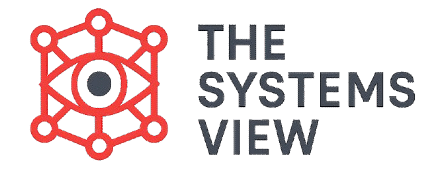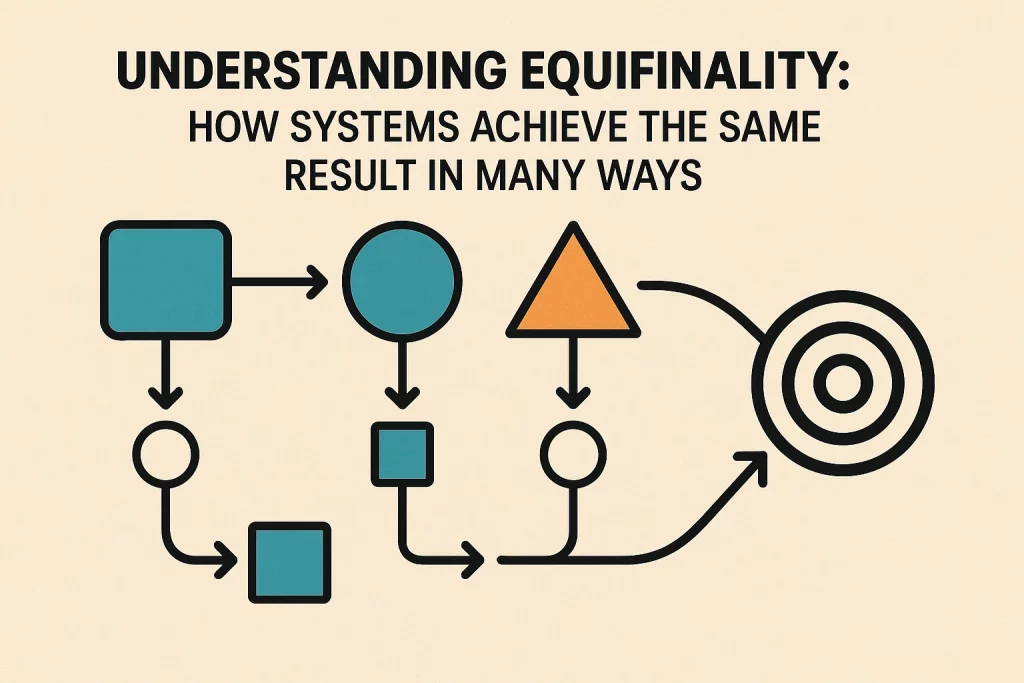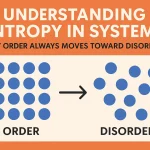Have you ever noticed that there are many different ways to solve the same problem? Two people might start from different places, use totally different methods, and still arrive at the exact same answer or outcome. This unique ability of a system is called Equifinality.
Equifinality is a core concept of General Systems Theory (GST), first introduced by Ludwig von Bertalanffy.The term comes from Latin, meaning “equal ending.” It describes the powerful tendency of complex, open systems to reach the same final state or outcome, even when starting from different initial conditions and using different internal processes. This concept demonstrates the resilience and flexibility of living systems.
The Definition of Equifinality
Equifinality challenges the simple, mechanical view of cause and effect. In a simple machine, the final state is determined entirely by the starting conditions (if you set a timer to 10 minutes, it will always end in 10 minutes). But in a complex system, the starting point doesn’t lock in the end point.
The Power of Open Systems
Equifinality is a property unique to open systems (systems that exchange matter and energy with their environment). Because an open system constantly takes in new resources, information, and energy, it can correct its course and adjust its internal processes to meet a specific goal.
- System Correction: If a system starts in a difficult state (e.g., a student starts a class failing), it can use incoming resources (tutoring, extra study time) to adjust its processes and still reach the desired final state (passing the class).
- Process Variation: The system doesn’t need a single, predefined path. It can use many different combinations of inputs and paths to achieve the same result.
Equifinality vs. Cause-and-Effect
| View | Focus | Final State Determination |
| Simple Cause-and-Effect | The initial input is the primary cause. | The final state is strictly determined by the initial conditions. |
| Equifinality | The internal organization and flow of the system. | The final state is independent of the initial conditions and depends on the system’s current structure. |
Examples of Equifinality in Action
Equifinality is a key concept for understanding how living things and organizations maintain their form and achieve goals despite internal or external disruptions.
Biological Example
Consider the process of growth in a living organism. A plant may start as a small seed in poor soil, while another plant of the same species starts as a healthy seed in rich soil.
- Despite the different starting conditions and the different challenges they face (one fighting for nutrients, the other dealing with pests), both systems can still reach the same final state of being a mature, healthy, adult plant of the typical size and form for that species. The system adjusts its internal processes to reach its intended form.
Organizational Example
Two companies start a new product launch. One has a huge budget but a weak design team, while the other has a small budget but a strong marketing team.
- Despite having completely different initial resources and internal strengths, both companies could still end up achieving the same final result: a 20% market share for the new product. The first company fixed its weak design with aggressive marketing, while the second fixed its small budget with superior design. Both paths led to the equal ending.
Equifinality is the unique property of complex, open systems to achieve the same final state or outcome even when starting from different initial conditions and following different internal processes.It is a defining characteristic of resilience and dynamic organization.
Equifinality and System Goals
For a systems thinker, equifinality provides an optimistic view of complexity. It proves that there is rarely only one “right way” to solve a problem.
Flexibility in Design
Equifinality encourages flexibility in system design and management. If a system is designed to be highly regulated (like a living organism), managers should not worry too much about minor variations in starting conditions. The system’s internal drive will use the available resources to steer toward the required end state.
Focus on Structure
Because the final state depends less on the starting input and more on the system’s current structure and organization, equifinality reinforces the holistic idea that the structure of the system is what matters most. The system uses its structure to process inputs and guide the final output.
Conclusion
Equifinality is the GST concept that shows the remarkable resilience of complex systems. It proves that the final outcome is not rigidly determined by the initial starting point but is instead achieved through the system’s flexible, internal ability to adapt, correct its course, and use many different paths to reach the same successful state. This concept is essential for understanding the adaptability of all open and organized systems.



